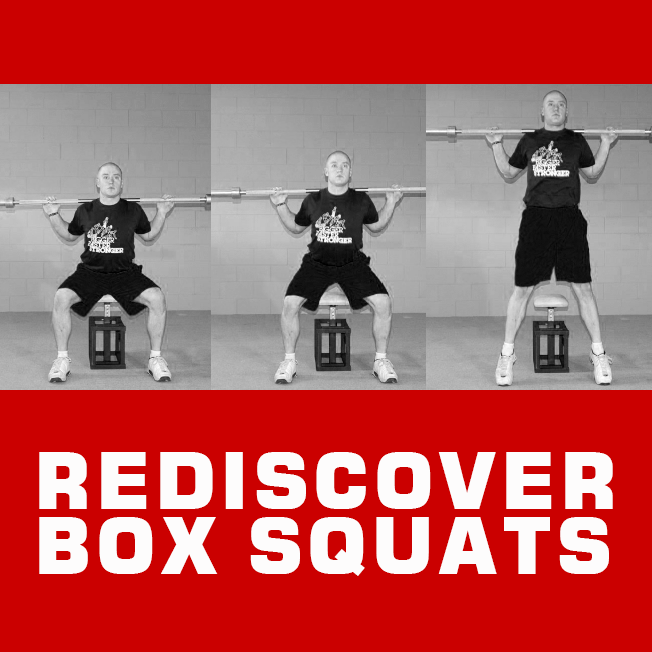Rediscover Box Squats


A look at the new science behind partial movements
In the early days of the Iron Game, bodybuilders trained hard on strength lifts such as the squat, deadlift, and bench press. Chuck Sipes, winner of the IFBB Mr. Universe in 1960, had massive muscles that enabled him to bench press 570 pounds and lift 250 pounds in the barbell curl. Sipes was a proponent of heavy partial movements, believing that their primary benefit is to increase tendon strength. That’s only one aspect of what partial movements can do for you.
Heavy partial movements disinhibit the nervous system so you can lift heavier weights. Here’s why. The Golgi tendon organ (GTO) is located in the junction between a tendon and a muscle, and works as a receptor that gives the nervous system feedback about tension and stretching of the muscle. For example, during an arm wrestling match, you often see a point in which the weaker opponent appears to suddenly give up when their arm is slammed to the table after several seconds of all-out effort. What is happening is that the GTO senses excessive tension and shuts down the muscle to protect it from injury.
When lifters perform heavy supports, such as by attempting a weight heavier than they can squat and holding it at the start position, or simply doing heavy partial movements, this exceeds the shutdown threshold of the Golgi tendon organ and the muscles shut down.
To train the muscles to lift heavier loads, partial-range-of-motion training has become popular, particularly among powerlifters and strongman athletes. It’s possible to take advantage of this training effect by alternating sets of heavy supports with full-range exercises, such as squats, deadlifts, and bench presses. Another method is to simply finish off regular exercises with several sets of heavy supports or partial-range exercises. An example of a partial-range exercise you can do for the upper body is a towel bench press (a bench press performed with a rolled-up towel or a towel bench pad); for the lower body, a box squat.
The box squat is a squat variation that is usually performed as the first exercise on Monday in the BFS off-season program or as the first exercise on Thursday in the in-season workout. Although box squats put the legs through less of a range of motion than is involved in conventional squats used in the BFS program, they allow you to use considerably more weight and thus help disinhibit the nervous system.
Another benefit of being able to lift more weight doing box squats is that the exercise can be more sport specific. For example, volleyball players can benefit from partial-range squats because these movements overload the range of motion typically required of these athletes’ legs in their sport. (This finding is from Science and Practice of Strength Training by Russian sport scientist Vladimir Zatsiorsky, one of the leading researchers in the field of strength and conditioning).
In recent years box squats have been embraced by the powerlifting community and even some strength coaches at the college level. While some critics of the box squat contend that it is dangerous, Dr. Greg Motley disagrees. Motley is an orthopedic surgeon who specializes in arthroscopy, sports medicine, and joint replacement at Southeastern Sports Medicine in Asheville, North Carolina. Motley’s athletic experience includes playing strong safety at the Division I level, resulting in six surgeries and two degenerated disks. To test the success of his subsequent rehab, Motley performed box squats and says that if anyone would know if the box squat caused increased pressure on the lumbar spine, it would be him.
Not only did Dr. Motley perform the exercise with no pain, he ended up endorsing the exercise. He says, “I went up pretty heavy that day, a lot heavier than I thought I could go – and I hadn’t squatted in 10 or 12 years. “I think it’s critical with the box squat – with all squats – that you have good technique and alert spotters. That being said, I think the box squat is a very, very good exercise.”
One additional benefit of the box squat is that it enables athletes to recover quickly from the exercise. Based upon the feedback from coaches, an athlete can box squat heavy the day before an athletic competition without causing fatigue that could decrease athletic fitness and thus performance. In fact, at BFS we’ve found that athletes usually perform better! However, we need to emphasize that the box squat does not replace the parallel squat.
BFS has been promoting the box squat as a core lift for nearly four decades. This lift has earned its place because it’s a great way to increase overall leg strength and to prepare for optimal performance at competition time. The old-time Iron Game athletes got this one right!
Related Products:

3-in-1 Squat Box Elite Racks Varsity Racks

